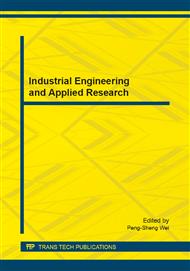p.352
p.358
p.364
p.371
p.375
p.382
p.386
p.391
p.394
The Study of Friction Power Loss of Piston Group of a Twin-Rotor Engine
Abstract:
Compared with the conventional piston engines, the new rotary engine has many significant advantages, such as smaller volume and higher power density. Current studies at home and abroad are mainly focusing on aspects of its structural design, kinematics, dynamics analysis, except mechanical efficiency. In conventional piston engines, frictional loss of the piston group accounted for 65% of the total friction power loss [1]. In order to provide the scientific basis for designing low friction piston of the rotary engine, this paper combine the average two-dimensional Reynolds equation, the asperity contacts equation, viscosity-temperature equation and loads balance equation, proposing a method for calculating the friction power loss, and the applying the method to calculate the friction power loss of piston group of a new rotary engine.
Info:
Periodical:
Pages:
375-381
Citation:
Online since:
August 2014
Authors:
Price:
Сopyright:
© 2014 Trans Tech Publications Ltd. All Rights Reserved
Share:
Citation:


